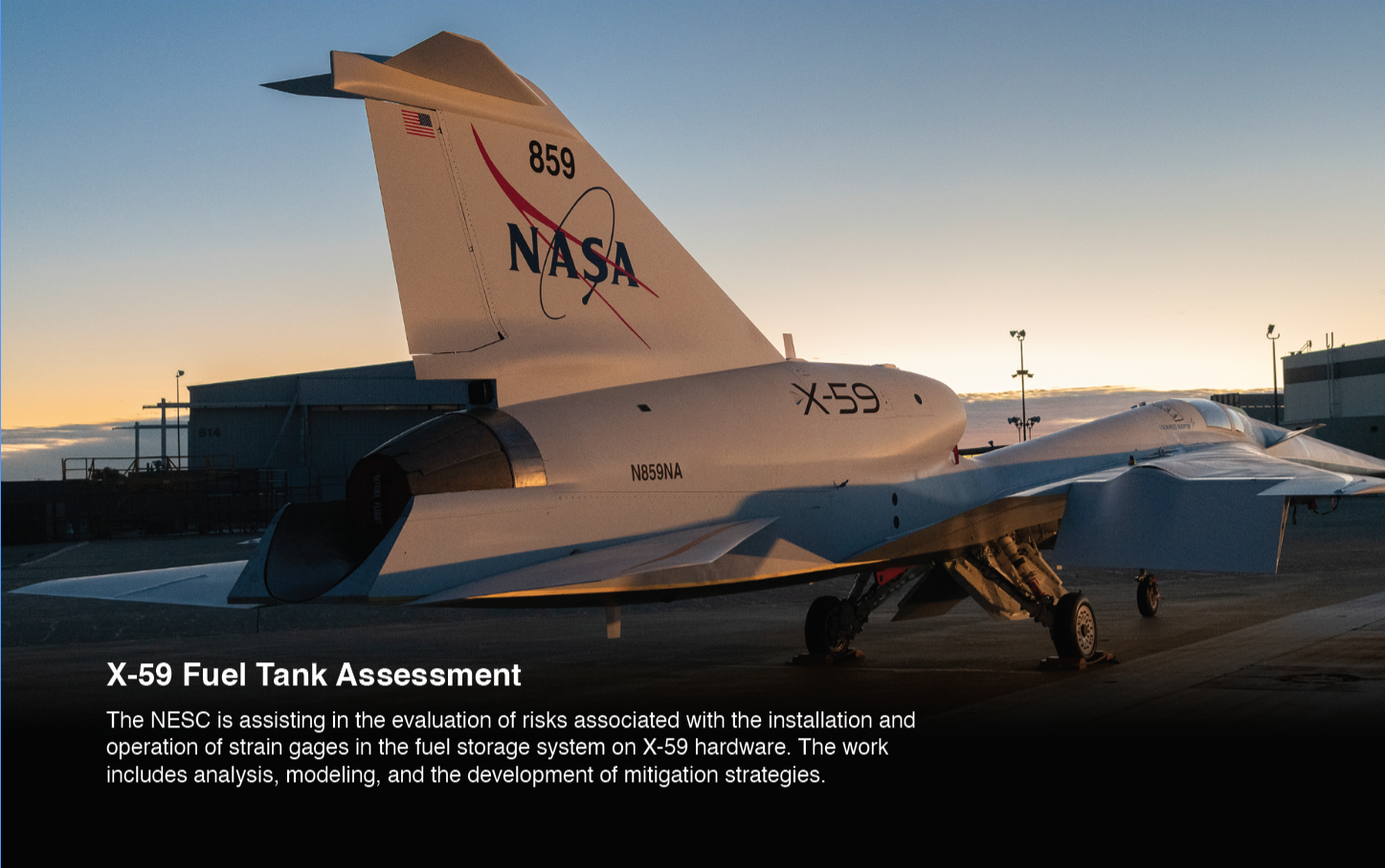The portfolio of current NESC technical activities reaches across mission directorates and programs encompassing design, test, and flight phases.
- ISS PrK Independent Assessment
- Orion Crew Module Heatshield Avcoat Char Investigation
- CFT Flight Anomaly Support
- Total Ionizing Dose Tolerance of Power Electronics on Europa Clipper
- Psyche Cold-Gas Thruster Technical Advisory Team Support
- X-59 Fuel Tank Assessment
ISS PrK Independent Assessment
The NESC is assessing the ongoing leak in the ISS Russian segment, PrK, the segment's remaining life, and how to manage the risk of potential failure.
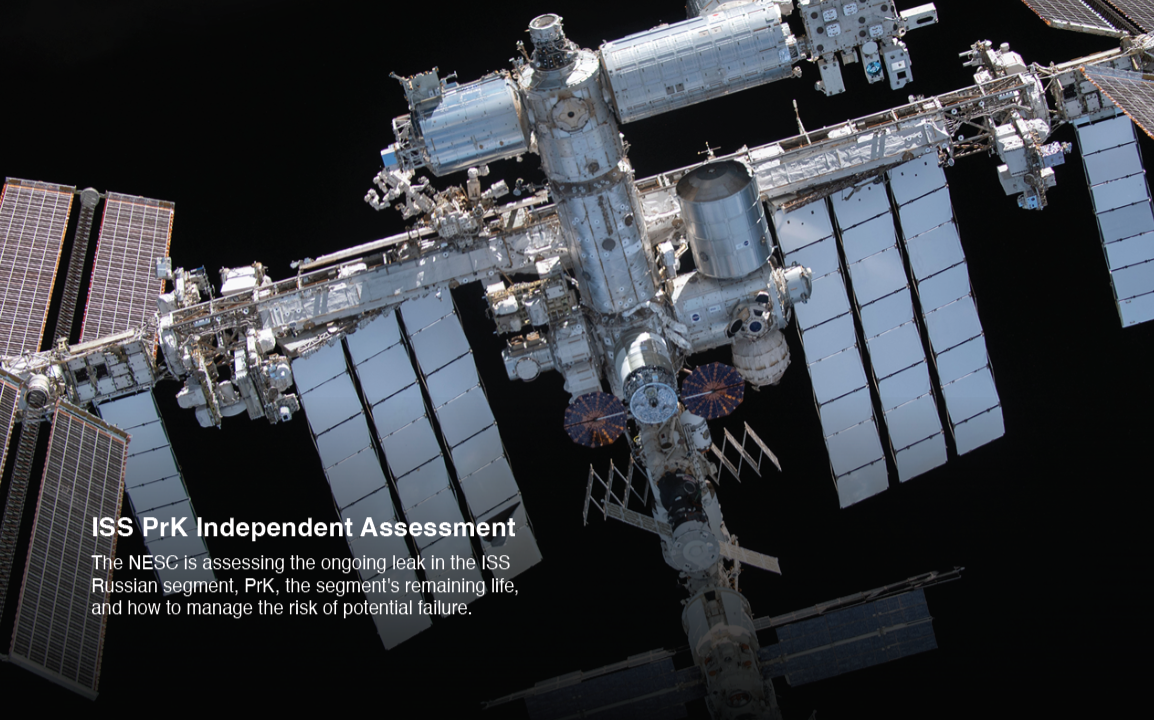
Orion Crew Module Heatshield Avcoat Char Investigation
The NESC provided thermal experts to the Artemis I Char Loss Team investigation of heatshield performance on the Artemis I return. The NESC is working with the team to ensure the observed material loss is understood so that decisions may be made regarding use for upcoming Artemis missions.
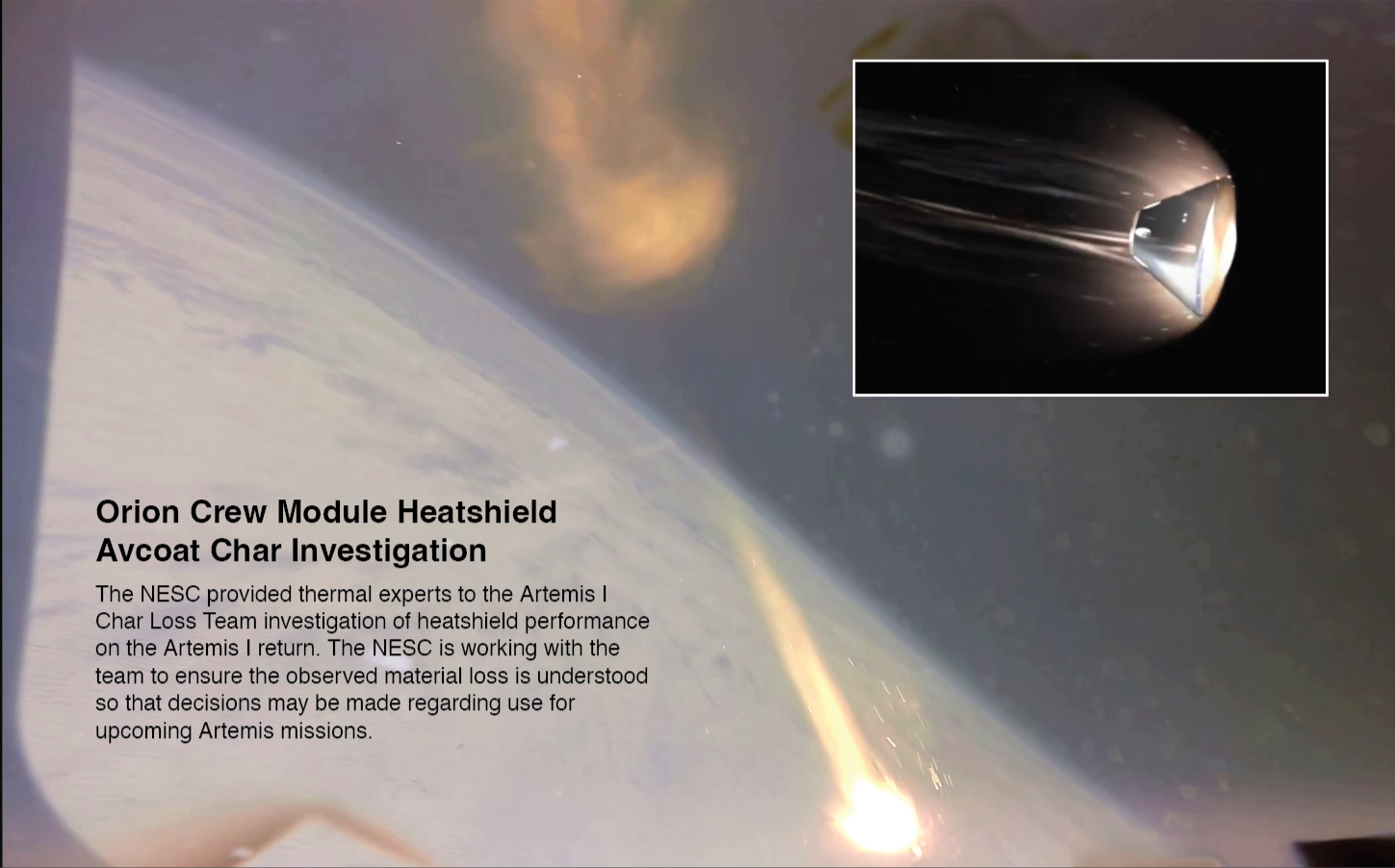
CFT Flight Anomaly Support
NESC discipline experts provided real-time support to CCP to aid in determining the CFT flight anomaly causes and risks associated with a crewed return. The NESC performed propulsion system testing for predicted mission profiles at WSTF.
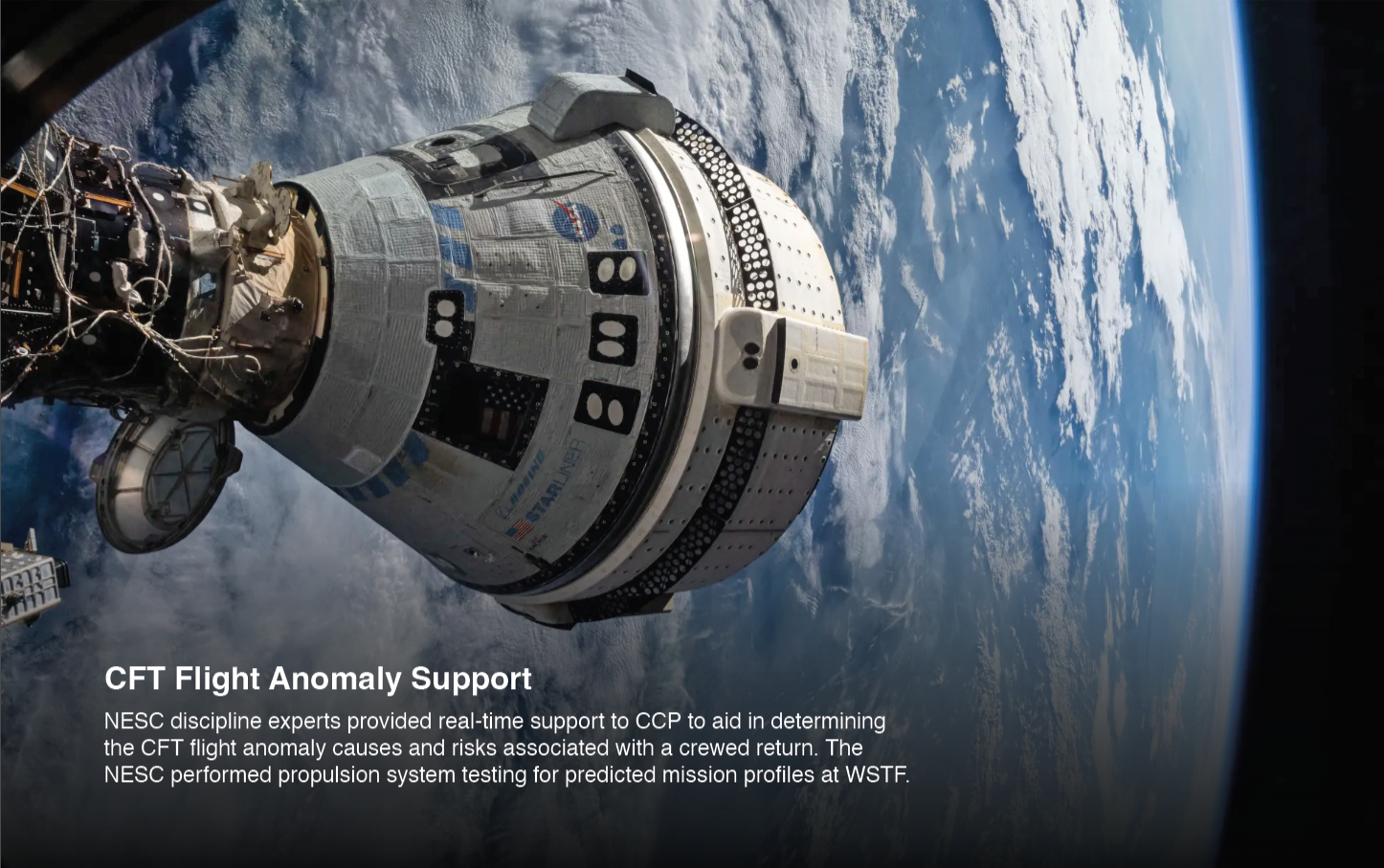
Total Ionizing Dose Tolerance of Power Electronics on Europa Clipper
The NESC provided power electronics and avionics expertise to JPL's Europa Clipper tiger team to help evaluate the radiation tolerance of key spacecraft electronics, assisting in a risk-based launch decision.
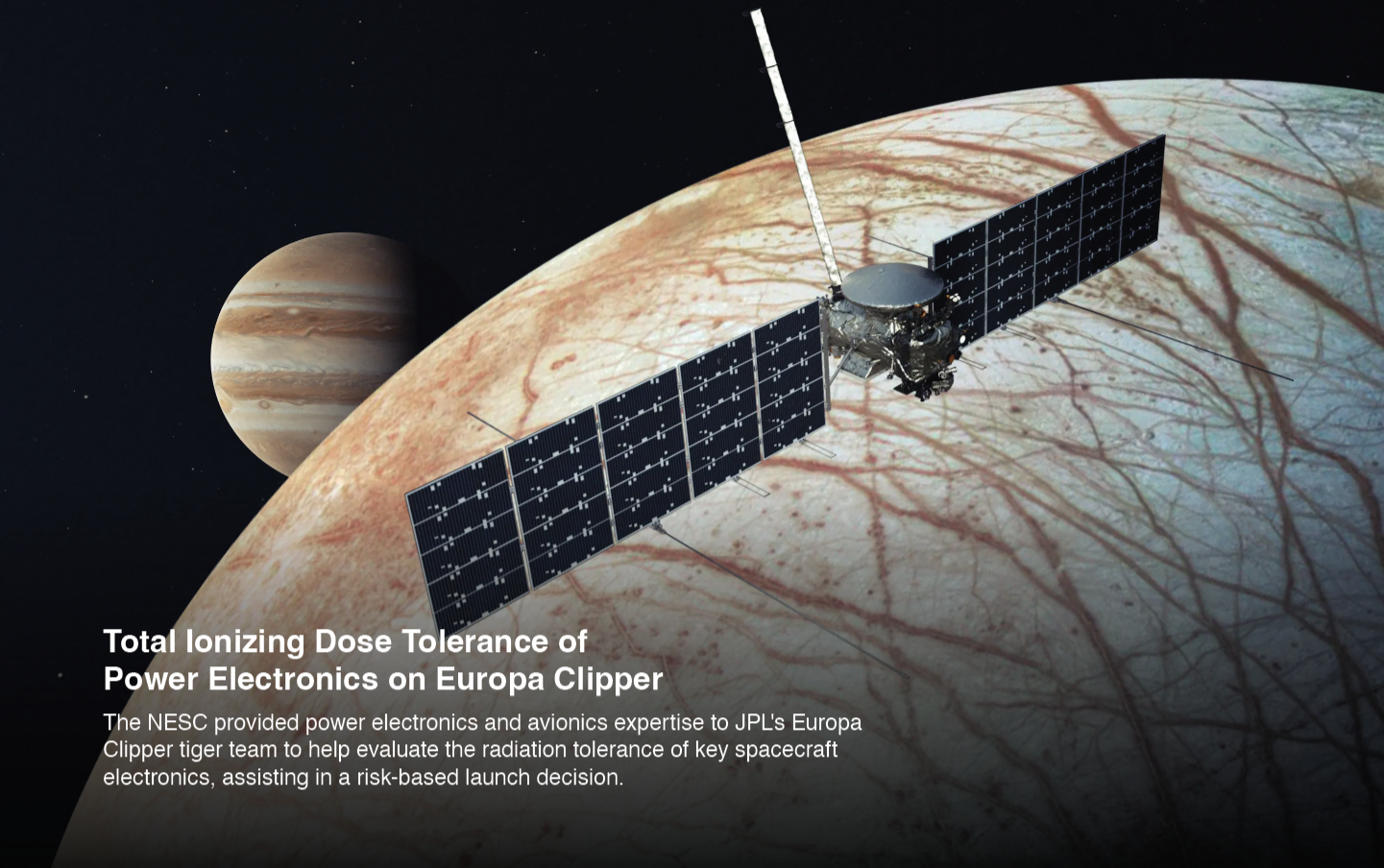
Psyche Cold-Gas Thruster Technical Advisory Team Support
In support of a successful launch, NESC augmented the Psyche team's investigation into increased understanding of the spacecraft's cold-gas thrusters and aided the project's risk-informed decisions regarding mitigations and readiness for launch.
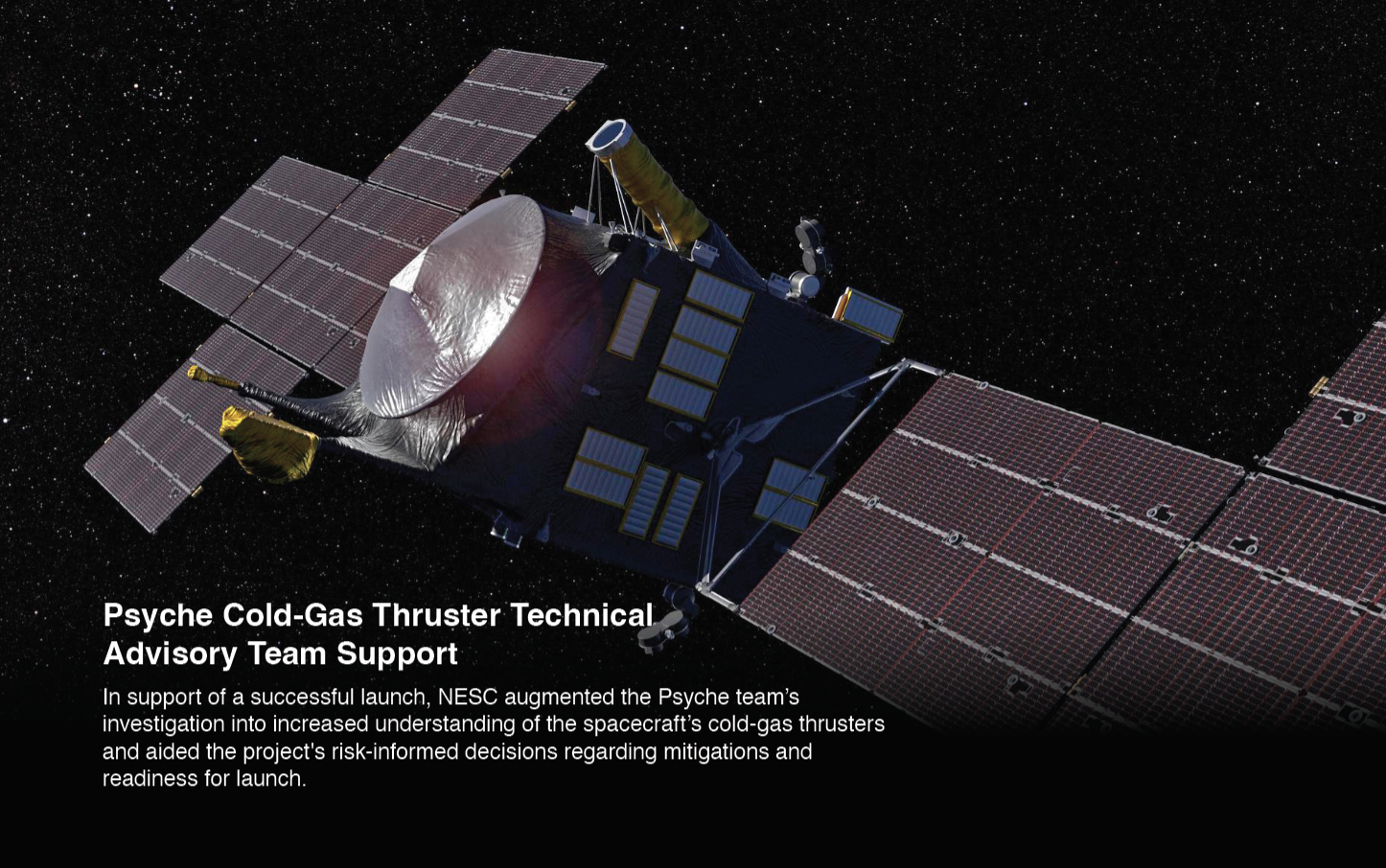
X-59 Fuel Tank Assessment
The NESC is assisting in the evaluation of risks associated with the installation and operation of strain gages in the fuel storage system on X-59 hardware. The work includes analysis, modeling, and the development of mitigation strategies.
